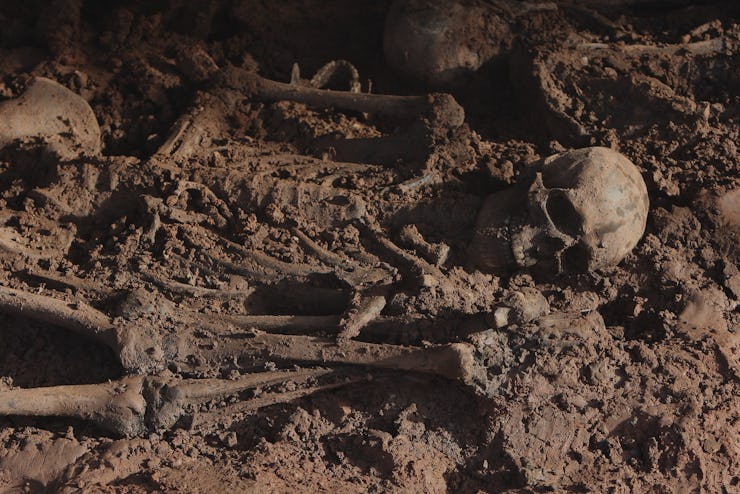The 5 Most Influential Ancient Corpses of 2016
These guys came back from the dead, for science.

Some of us do great things in life, some of us do great things in death. Much of what we know about our human ancestors before the advent of written documents — and even since — is thanks to corpses left behind and happened upon thousands of years later by archaeologists.
It’s a little morbid, for those curious about humanity’s past. Here are five ancient humans given a second life through scientific exploration in 2016 so far.
The Antikythera Shipwreck’s Lost Soul
A great cargo ship sunk off the coast of the Greek island Antikythera 2,000 years ago. First discovered in 1900, divers have brought up an enormous wealth of ancient goods: Among the wreckage was the famous Antikythera mechanism, believed to be the oldest known analog computer.
This year, a new excavation effort found treasure of a different sort: human remains — the first exhumed since the advent of DNA sequencing technology. With permission from the Greek government, scientists hope to mine the old bones for traces of the victim’s former life. We may one day know who his ancestors were, and what his face may even have looked like.
Zeus’s Teenaged Sacrificial Victim
Earlier this year Greek archaeologists dug up the remains of a teenager among animal bones on Mount Lykaion, a known sacrificial altar to Zeus. The remains — believed to be 3,000 years old — may help confirm ancient texts from Plato and others that humans were offered to the god of the sky on that spot. Previous digs had only uncovered animal parts.
According to a particularly gruesome version of the legend, human and animal meat were cooked together and eaten; the person who ate the human flesh would turn into a wolf for nine years, the AP reports.
Ötzi the Iceman
Italy’s frozen mummy is the archaeological gift that keeps on giving. Discovered 25 years ago, scientists continue to use new techniques to uncover the secrets of the man murdered in a cold land at his campsite.
Fortunately for us, his attackers weren’t after his stuff or didn’t have time to collect it, and his tools and accoutrements offer an unprecedented glimpse into European life 5,300 years ago. Recently, scientists used 3D printing to build replicas of the famous mummy, so that more scientists and curious members of the public might have access to his mysteries.
The Mongolian Mummy and Her Pumped up Kicks
A 1,500-year-old grave site in Mongolia captured the world’s attention earlier this year thanks to the footwear worn by the female mummy who lay inside. She wore leather shoes with a distinct striping pattern, reminiscent of the much more modern Adidas brand.
While weirder corners of the internet immediately suspect conspiracy and time travel, scientists marveled at the completeness of the site. The woman belonged to the Turkic people and was buried alongside equestrian and household implements, as well as a horse sacrificed to her honor. Local archaeologists hope to glean more information about the rituals, customs, and lifestyle of her people from the find.
The Chinese Marijuana Man
In October, archaeologists reported the discovery of a 2,500-year-old corpse in China, buried under a shroud of cannabis plants. It’s the only known grave where this has been done, and so it’s hard to extrapolate what the marijuana plant might have meant to the man, or the people who laid him in the ground.
However, since the plants were whole and flowering, it’s the first indication that cannabis was actively being cultivated in China at the time. Since there’s no evidence that hemp was being used as fiber for clothing or other uses, it’s suspected that weed was used symbolically or medicinally.